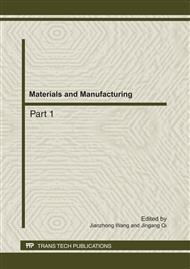p.770
p.774
p.778
p.785
p.789
p.794
p.798
p.802
p.806
The Influencing of Fibers on the Concrete Used to Nuclear Waste Container
Abstract:
To ensure the carrying safety and long-term durability of nuclear waste, using orthogonal mix proportion design and incorporating steel, polypropylene hybrid fiber, fly ash or steel fiber solely in the concrete, then flexural properties and impermeability tests are carried out respectively in normal temperature and after being heated to 150°C. By the gradation and variance analysis, the quantification of effects which the different kinds of admixtures and their incorporation had toughness and impermeability of concrete had been done: The bond force of steel fiber A which is more longer and with the type of sheared thread and concrete is better, the effect of crack-resistance and toughening is all better when pre-and post heated; As the addition of the fiber mixing amount, the bending property basically present the tendency enhanced for hybrid steel fiber A and B; The factors play a strengthened role in impermeability height of concrete with the increase of fiber’s content, for the order of effect: A> C> D> B. When the time for heating is longer than 17 days, the impermeability of steel fiber concrete SP-10 is stronger than high-strength concrete SP-13, therefore, the hybrid steel fiber (A , B) concrete is fit for container for nuclear waste.
Info:
Periodical:
Pages:
789-793
Citation:
Online since:
July 2011
Authors:
Price:
Сopyright:
© 2011 Trans Tech Publications Ltd. All Rights Reserved
Share:
Citation:


